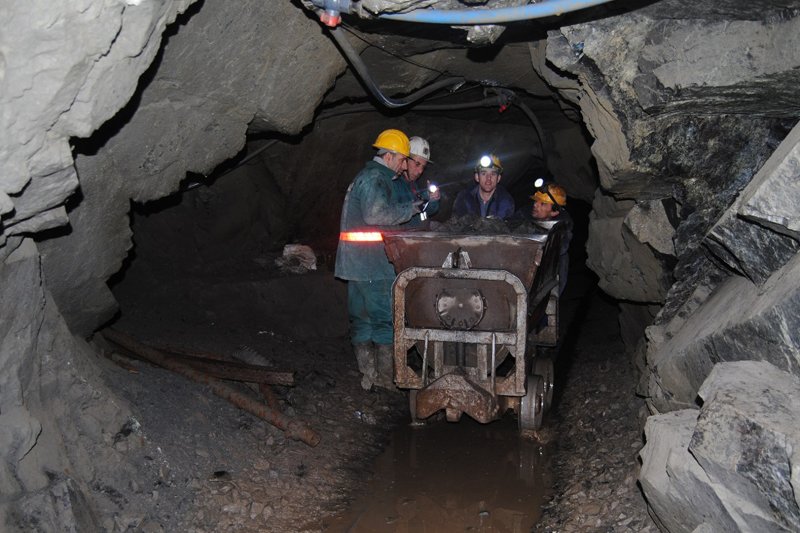Discovery Could Unlock Hydrogen Economy
Geological fieldwork occasionally happens in dangerous places, from the slopes of erupting volcanoes to the depths of frigid Antarctic chasms. Even so, they tend not to take place inside exploding mines.
That, however, is exactly where a team of scientists went exploring: the Bulqiza chromite mine in Albania, just northeast of the capital Tirana. Instead of looking for valuable minerals or beguiling rock formations, they were seeking the source of those explosions: almost-pure hydrogen gas - a potentially renewable energy source that could transform the world.
As reported in a recent study in the journal Science, the team found it. Deep below ground, they encountered a small pool effervescing like a frenzied jacuzzi. “The gas was intense,” says Bardhyl Muceku, a geologist at the Polytechnic University of Tirana and one of the study’s authors. About 84 percent of the gas was hydrogen - and this was one of several seeps in the Bulqiza mine that, in total, was venting at least 200 tons of hydrogen every single year.
The world is several years away from being able to extricate meaningful volumes of natural hydrogen gas from the earth cheaply, cleanly, and efficiently. First, those reservoirs need to be found. “There’s a lot of work to be done,” says Geoffrey Ellis, a petroleum geochemist with the U.S. Geological Survey who wasn’t involved with the work. But discoveries like Bulqiza are cause for optimism that there may be enough hydrogen trapped underground to power the planet. “This could work,” he adds.
Hydrogen is the most commonplace element in the cosmos, but it’s hard to find on Earth. When not bound up in other compounds, it’s a colorless gas that likes to escape skywards. That’s a shame because if we could capture it, it could help transition the warming world away from fossil fuels. “It can be used as a low-carbon energy store,” says Katriona Edlmann, a geo-energy expert at the University of Edinburgh who wasn’t involved with the work. “You can burn it, and it just produces water. Or you can use it in fuel cells, and it produces electricity. And it can be deployed in the same ways as natural gas.”
Humanity has known that hydrogen has been seeping out of the planet for ages, but it was always thought that the subsurface contained tiny amounts of the stuff. “The assumption was that you could never get accumulations of it,” says Ellis. Hydrogen gas, as a molecule, is small, light, and diffusive, so scientists reasoned that any underworld caches should have leaked into space long ago or were otherwise eaten by certain types of microbes that use hydrogen for energy.
The petroleum industry was also not on the lookout for hydrogen. They would sometimes stumble across it while questing for oil or methane gas deposits, but “they just didn’t report it, or they buried it in some company report,” says Ellis. “They weren’t interested. It wasn’t what they were looking for.”
Today, in some settings, hydrogen is used as a minor energy or electricity source - but it must be manufactured. There are myriad ways to do this, from using solar power to electrically sever hydrogen from water molecules to using steam to extract hydrogen from methane gas.
But these methods are either prohibitively expensive, prone to releasing greenhouse gases, or both. “Cheap hydrogen is the main step towards a hydrogen economy,” says Ali
Hassanpouryouzband, a sustainable energy scientist at the University of Edinburgh wasn’t involved with the work. And presently, that doesn’t exist.
In an ideal world, pure hydrogen gas extracted from below ground would be the most cost-effective way to obtain the valuable substance. But that world long appeared fictional - that is, until 2012 when a sizable hydrogen gas reservoir was found in Mali. More pockets of hydrogen have been found since, including some in Europe and South America.













